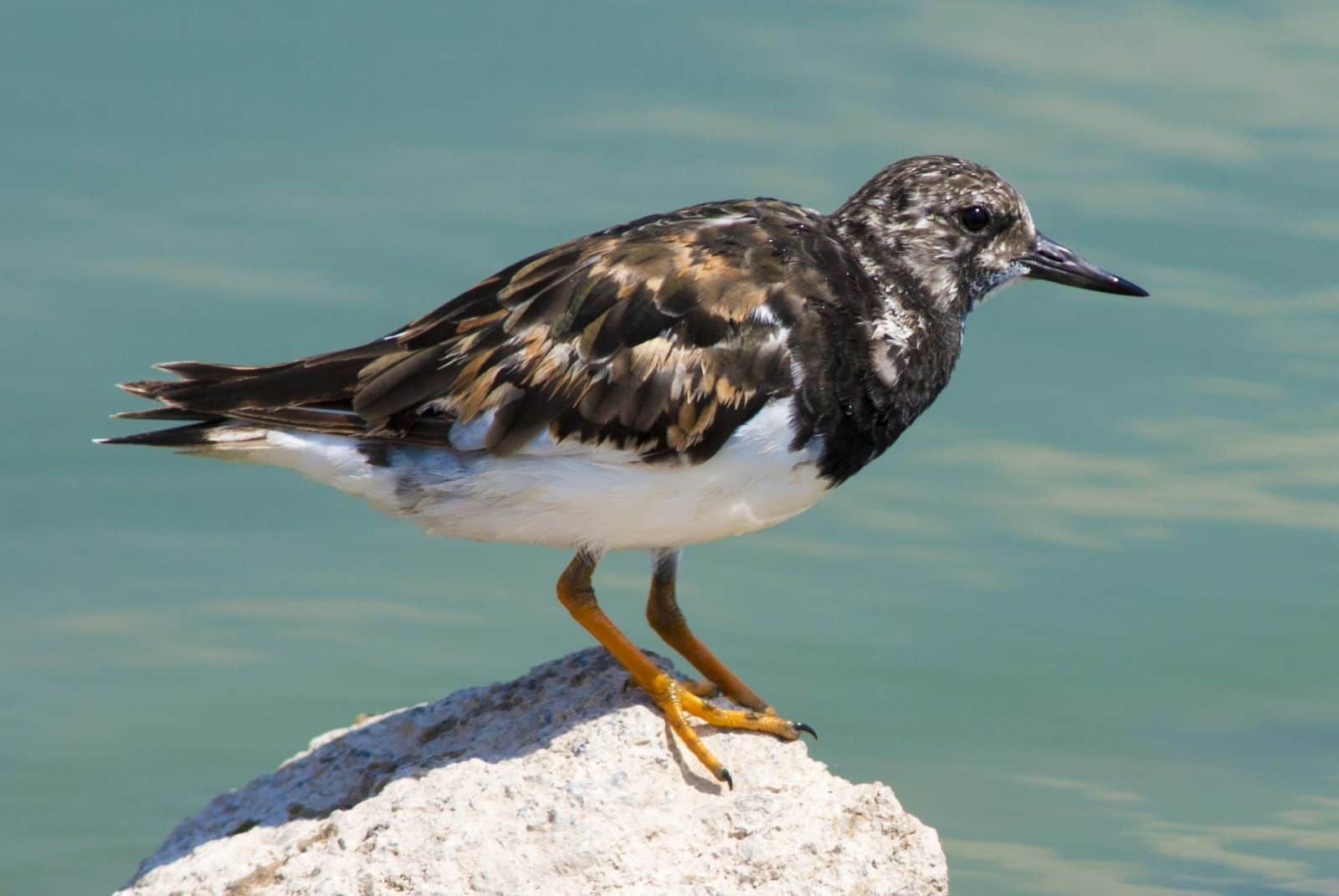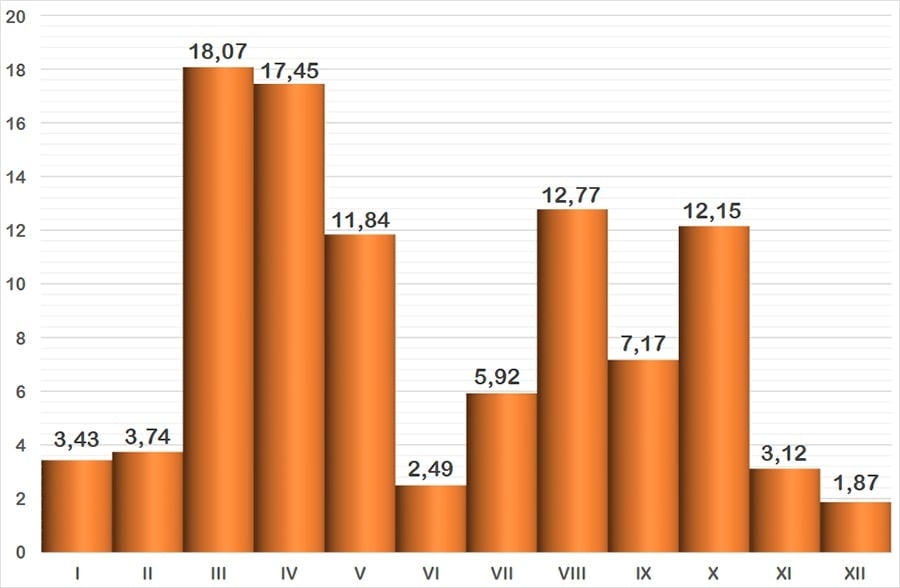Its name betrays a pattern that makes it easily identifiable, it finds food under the pebbles at the edges of ponds, so it scurries around the edges of flooded areas, turning them over and capturing the food. Stubby and medium-sized, it has a black, wedge-shaped beak, orange legs and a black pectoral band that contrasts with the white breast. During the summer, adults’ backs are covered with orange-brown feathers with black patterns. In flight a large white rump and a wing stripe of the same colour are visible. The tail is white with a black band. The summer pattern of the head, with a hood of black striped feathers contrasting with the white of the head, as well as a black eyeline running to the moustache, in winter becomes a less contrasting brown and mixes with the black of the breast.

Species 1
Ruddy Turnstone
Scientific name
Family 2
Taxonomic Affinity Group 3
Phenology 4
It is a long-distance migrant, ranging from tropical and temperate coasts to circumpolar tundra environments. In our localities it appears throughout the year in the ‘Salinas de Poniente’ and in winter in the ‘Ribera de la Algaida’, although in the first the migratory passages have a clear influence, the prenuptial one lasts longer and the postnuptial is more marked

The graph represents the probability of seeing a species during the year, grouped into months. The vertical axis indicates the percentage value. Each of the bars expresses its value. The horizontal axis represents the months: I = January, II = February, III = March, IV = April, V = May, VI = June, VII = July, VIII = August, IX = September, X = October, XI = November and XII = December.
Observation recommendations
Because of its nervous behaviour, its habit of turning stones and its striking plumage makes this species easily observed, in addition to having a preference for getting together in small groups.
Observation areas where we can find it
Notes
[1] The names used are from the list of birds of Spain, drawn up by SEO/BirdLife and updated to 2019 (https://seo.org/listaavesdeespana/). The reference is: Rouco, M., Copete, J. L., De Juana, E., Gil-Velasco, M., Lorenzo, J. A., Martín, M., Milá, B., Molina, B. & Santos, D. M. 2019. Checklist of the birds of Spain. 2019 edition. SEO/BirdLife. Madrid.
[2] The taxonomic family to which it belongs is indicated.
[3] Traditionally, waterbirds have been grouped according to their taxonomy or “taxonomic affinity”, i.e., when some birds coincide in certain features that allow them to be classified scientifically, but without leaving the rigour of science, they are put together in these groups so that they can be easily recognised. These groups are the following: Greves (belonging to the Podicipedae family), Herons and Similar (includes the families: Ardeidae -Herons- Ciconiidae -Storks- and Threskiornithidae -Ibises and spoonbills-), Ducks (the whole Anatidae family), Coots and Similar (the family Rallidae corresponding to Rails, Gallinules and Coots), Cranes (also with only one family, the Gruidae), Waders , a heterogeneous group, the most diverse of this classification, includes the families Burhinidae (Stone-curlews), Haematopodidae (Oystercather), Recurvirostridade (Avocets and Stilts), Glareolidae (Pranticole), Charadriidadea (Plovers), Scolapacidae and finally Gulls and Similar (the recently unified family Laridae, i.e. Gulls and Terns).
[4] Phenology studies the relationship between the cycles of living beings and meteorological factors, and in our latitude these factors manifest themselves as variations throughout the year, thus relating the seasons to the birds’ cycles (breeding, migratory journeys, etc.) The graph shows the probability of seeing a bird depending on the month. It uses data from 48 bird censuses carried out between October 2016 and September 2018. The method used is that of a census route with sampling stations, with a total count on the sheet of water.
